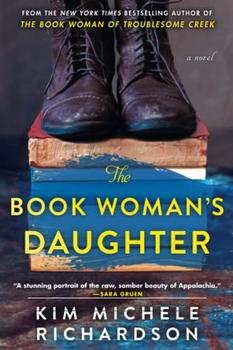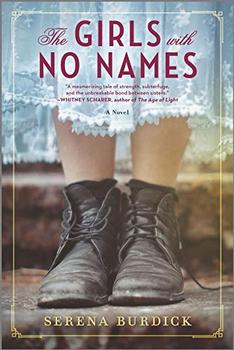Summary | Excerpt | Reading Guide | Discuss | Reviews | Beyond the book | Read-Alikes | Genres & Themes | Author Bio

A Novel
by Kim Michele RichardsonKim Michele Richardson's The Book Woman's Daughter follows Honey Lovett, 16-year-old daughter of Cussy Mary, the blue-skinned packhorse librarian introduced in the 2019 bestseller The Book Woman of Troublesome Creek. As the story opens, Cussy Mary and her husband are about to be arrested for violating Kentucky's anti-miscegenation laws; while Cussy is of European ancestry and her skin color is a genetic abnormality, in the eyes of the law she's non-white, making her marriage to a white man illegal. Should they be convicted, Honey will be considered an orphan and will be sent to the Kentucky House of Reform — a workhouse well-known for its harsh conditions — where she'll be incarcerated until her 21st birthday. To escape this fate, Honey's parents arrange for her to return to remote Troublesome, Kentucky to stay with a family friend. Circumstances conspire against the young woman, and in order to survive she gets a job as an assistant outreach librarian, following in her mother's footsteps as she delivers library books by mule to the area's remote residents. Along the way, she forms friendships and faces dangers while seeking to retain her freedom.
The two novels are structurally quite similar; each is told from the perspective of a courageous young heroine employed during a time when few women worked outside the home. Both books have interesting, diverse characters who encompass a broad spectrum of people who might have inhabited remote Appalachia in decades past. Present in each is also an antagonist who is opposed to the Book Woman's efforts and seeks to stop her, one way or another.
The primary difference between the two lies in the topics on which Richardson chooses to focus. The first novel concentrates on the Pack Horse Library Project established during the Great Depression, and also contains a lot of historical content about the Blue People of Kentucky. The Book Woman's Daughter, in contrast, is more concerned with women's roles during the era. Readers meet women working in the few careers where they were accepted (teacher, nurse) but also others who were trailblazers in male-dominated fields, such as a widow who resorts to coal mining after the death of her husband. This change in focus gives each novel a distinctive feel. In the first, it seems like Richardson started with a hard core of fact and developed a plot around the information. The later book, on the other hand, seems to start with its characters at its center, and as a result it has a more coherent plot that flows better.
Richardson's conveyance of time and place is exemplary, and her descriptions of the beauty and remoteness of Kentucky's hollers almost make them characters in their own right. She's also skilled at painting a complete picture of what life there may have been like — a life that could be grim at times. She fully captures her subjects' prejudices and superstitions, their fears and their loves, and their generous spirits; indeed, these three-dimensional portraits of her characters are perhaps the narrative's highlight.
I enjoyed both works, but thought The Book Woman's Daughter had the stronger storyline. That said, its plot is fairly predictable, and most of the history the author includes doesn't have the "I didn't know that!" quality that makes her first book such a stand-out. Richardson's brilliant character development amply makes up for the novel's imperfections, though.
When all's said and done, it's likely those who enjoyed The Book Woman of Troublesome Creek will also enjoy the sequel. The Book Woman's Daughter can be read as a standalone work but reading the prior book first provides depth that I, for one, appreciated. This novel is recommended for most audiences, but it has a bit of a youthful feel to it, making it especially appropriate for young adult readers. Book groups will find many themes that make for good discussion topics, particularly regarding women's roles, past and present.
![]() This review
first ran in the June 22, 2022
issue of BookBrowse Recommends.
This review
first ran in the June 22, 2022
issue of BookBrowse Recommends.

If you liked The Book Woman's Daughter, try these:

by Evan Friss
Published 2024
An affectionate and engaging history of the American bookstore and its central place in American cultural life, from department stores to indies, from highbrow dealers trading in first editions to sidewalk vendors, and from chains to special-interest community destinations

by Serena Burdick
Published 2020
A beautiful tale of hope, courage and sisterhood, inspired by the real House of Mercy and the girls confined there for daring to break the rules.
Your guide toexceptional books
BookBrowse seeks out and recommends the best in contemporary fiction and nonfiction—books that not only engage and entertain but also deepen our understanding of ourselves and the world around us.